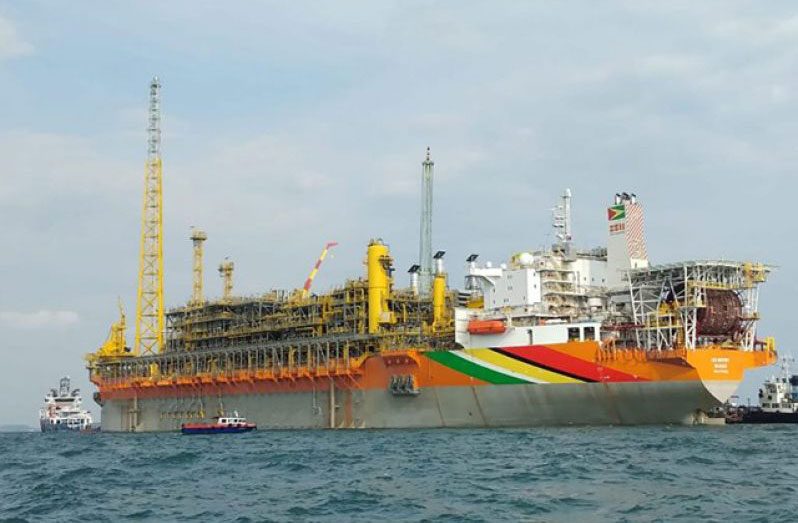By Navendra Seoraj
GUYANA’S role in the global petroleum industry could be bigger than it appears on the surface, as an analysis done by global energy research and consultancy group, Wood Mackenzie, shows that the country is among five nations which will produce most of the remaining deep-water oil resources.
According to the group’s analysis, oil and gas will play a significant role in meeting energy demands for decades to come, especially with the upstream industry expecting to fill the 450 billion barrels of oil equivalent (BoE) of undeveloped supply needed by 2040.
“Today, there is no resource shortage overall, but the supply opportunity is overshadowed because the industry has a lot more supply than demand. This means only the best oil – the most advantaged resources – makes it to the market,” Wood Mackenzie said in its study.
An analysis performed by Wood Mackenzie’s new Lens Subsurface Discovery solution – a one-of-a-kind repository of global subsurface data – recently revealed how granular detail such as porosity, depth, and gross depositional environment (GDE) can pinpoint locations with the best reservoirs, and ultimately, the best oil and gas.
With actionable insights now available at the push of a button, investors and operators can position portfolios as competitively as possible, the group related.
In the case of Wood Mackenzie’s analysis, understanding what attributes impact oil-recovery factors helped answer their pointed question, “Which countries have the best performing deep-water reservoirs?”
“We found that 80 per cent of the remaining deep-water oil resources will come from five countries (Brazil, the U.S., the Gulf of Mexico, Guyana, Nigeria, and Angola). Therefore, understanding the quality of their reservoirs is key to identifying who has the best oil,” Vice-President of Subsurface Research for Wood Mackenzie, Dr Andrew Latham, is quoted as saying in a report from Wood Mackenzie.
Guyana attracted international attention after ExxonMobil made the first commercial discovery of oil offshore Guyana in 2015 and started production in December 2019. In September 2020, ExxonMobil made its 18th discovery offshore Guyana at the Redtail-1 well.
According to the second largest stock exchange in the world by market capitalisation, NASDAQ, Guyana with its estimated recoverable resources of about nine billion barrels of oil equivalents is projected to be among the world’s largest per capita oil producers by 2025.
Data from Norwegian independent energy research and business intelligence firm, Rystad Energy, suggests that close to 300 million barrels of oil equivalent has been discovered on average for each exploration well (wildcat and appraisal) drilled in the country over the past six years. This aside, with around 16 exploration wells planned, including some in riskier frontier regions, 2021 holds a lot of promise, Rystad Energy said.
ExxonMobil, operator of the Stabroek, Canje and Kaieteur blocks offshore Guyana, will be spearheading the local exploration activities, having already set an ambitious divestment target of $15 billion by expelling mature assets in Asia, Europe and Africa, so as to prioritise investments in “high-value” assets such as Stabroek.
According to Rystad Energy, the company’s drilling activity will focus on “firming up” resources in the southeastern part of the Stabroek Block, where deeper plays have been observed underneath the existing discoveries. ExxonMobil’s first offshore Guyana project at the Stabroek Block, Liza Phase One, began producing in late 2019, well ahead of the industry average for development time. Liza Phase Two remains on track to begin producing oil by early 2022.
Liza Phase Two will produce up to 220,000 barrels of oil per day at peak rates, using the Liza Unity FPSO. Recently, the oil giant, following an agreement with the Government of Guyana, decided to proceed with the Payara field development offshore Guyana.
Payara is ExxonMobil’s third project in the Stabroek Block, and is expected to produce up to 220,000 barrels of oil per day, after start-up in 2024, using the FPSO vessel. The US$9 billion development will target an estimated resource base of about 600 million oil-equivalent barrels.
Oil production is undoubtedly contributing significantly to local growth, but the World Bank has cautioned Guyana that risks related to the management of wealth generated from the sector remain.
“Guyana will be challenged to transform its burgeoning oil wealth into human capital, physical capital, and financial assets for broad-based welfare increases,” the World Bank cautioned in its recently published semi-annual report on the Latin American and Caribbean Region.
The country’s oil-and-gas-sector is already pumping finances into its Natural Resources Fund (NRF), with some US$61,090,968 (approximately G$13B) being earned from the sale of the nation’s fifth oil lift. The government, in keeping with its commitment to accountability and transparency in the petroleum sector, has announced that the country received its latest payment after the sale of 997,420 barrels of oil which were lifted from ExxonMobil’s Liza Destiny on February 5, 2021.
The nation, new to the petroleum sector, sold its first one million barrels of crude on February 19, 2020, raking in nearly US$55 million. In its second million-barrel sale, the country received US$35 million, US$46 million as proceeds from the sale of its third million-barrel of crude, and US$49.3 million from its fourth oil lift.
Based on a consolidation of all the lifts to date, the country has sold 5,009,797 barrels of oil valuing US$246,542,662. The country is anticipating its sixth lift within the next two weeks. Along with the earnings from the oil lifts and over US$21 million in royalties and interest, Guyana has close to US$267,668,709 in its NRF, at the U.S. Federal Reserve Bank.



.jpg)










